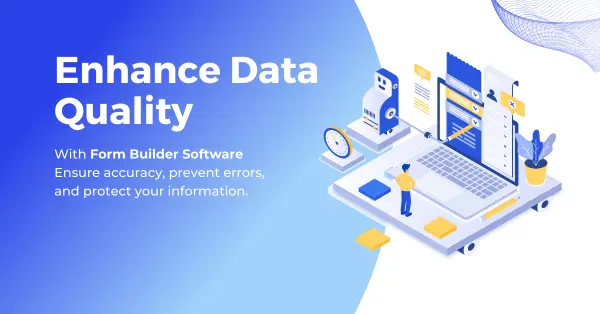Staying ahead of the curve and understanding your clients’ tastes is critical in the fast-paced world of fashion. Women’s clothes catalogs have progressed from glossy pages to internet platforms. In this in-depth essay, we’ll look at how online form builders may be used to speed consumer feedback collection and improve product offerings in women’s apparel catalogs. From the fundamentals to sophisticated methods, this guide will help fashion businesses leverage the potential of online forms for success.
Introduction
The fashion business is not immune to the need to constantly adapt and change in the digital age. Women’s clothes catalogs, which were traditionally delivered door to door, now thrive online.

The key to success in this transformation is successfully analyzing and responding to customer feedback. In this aspect, online forms have emerged as a game changer, allowing businesses to gain crucial data that define their product offerings and customer satisfaction methods.
Table of Contents
Leveraging the Power of Online Forms
The Role of Online Forms in Modern Catalogues
Online forms have become indispensable tools for businesses in various industries, and women’s clothing catalogs are no exception. Here’s why they matter:
- Efficient Data Collection: Online forms make collecting client feedback more convenient for both customers and enterprises. Paper surveys are inconvenient and time-consuming, whereas online forms may be completed in only a few clicks.
- Real-time Responses: Because online forms collect input in real-time, businesses can respond quickly to client issues and desires. This real-time feature is critical in an era when trends change swiftly and client expectations vary at the same rate.
- Cost-effectiveness: Printing traditional feedback forms can be expensive, not to mention ecologically bad. Online forms save money and are environmentally friendly. It is a win-win situation for both corporations and the environment.
- Data Analytics: Online forms generate significant data that may be studied to acquire insights into client behavior and trends. This information can be used to develop effective plans for improving product offers and consumer engagement.

Embedding Online Forms in Your Women’s Clothes Catalog
Embedding online forms within your digital catalog is a strategic move that can elevate your brand’s customer feedback game. This ensures that customers can easily provide feedback while browsing your offerings. Here’s how to do it effectively:
- Strategic placement: Place the form prominently but inconspicuously inside the catalog. Placing it near product descriptions or at the end of a shopping session encourages customers to give their opinions while not interfering with their browsing experience. A simple “Feedback” button or icon can do wonders.
- Clear and Concise Questions: Create specific and easy-to-understand questions. Avoid using industry jargon or complicated vocabulary. This improves the quality of feedback and decreases the likelihood of customers quitting the form due to uncertainty.
- Incentives: In exchange for feedback, consider offering incentives such as discounts or early access to future collections. This encourages involvement while also rewarding loyal consumers for their useful insights. Everyone enjoys a good bargain!
- Mobile Optimization: Check to see if your web forms are mobile-friendly. Many buyers nowadays browse Women’s Clothes Catalog on their smartphones. If your form is not mobile-friendly, you risk losing vital input from a sizable section of your audience.
Analyzing and Utilizing Customer Feedback
Gathering feedback is only the first step. To improve your product offerings, you must analyze and act on the data you collect:
- Data Segmentation: Sort feedback into categories based on common themes. This aids in the identification of reoccurring difficulties or preferences. For example, you may observe that a certain design or color is popular among clients, or that certain sizes are frequently out of stock. Such knowledge can help with inventory management and product development.
- Product Development: Use input to improve existing products or create new ones that are in line with customer preferences. This is where the genuine value of consumer feedback shines through. It is not enough to simply listen; action must be taken to suit the demands and preferences of the customer.
- Customer Engagement: entails interacting with customers who provide feedback. Demonstrate to them that their thoughts are important and that you value their contribution. A personalized “Thank You” note might help to increase consumer loyalty.

Success Stories: Brands that Excel in Feedback Collection
Case Study 1: A Leading Women’s Fashion Brand
A leading women’s fashion brand has set a remarkable example in feedback collection:
- Interactive Lookbook: An interactive lookbook is included in the brand’s online catalog, allowing shoppers to submit feedback on each outfit. This engagement-driven approach has greatly enhanced customer participation. Customers can rate each outfit, leave comments, and even suggest combos.
- Customized apparel Recommendations: The brand offers customized apparel recommendations based on feedback data. When users input their style preferences, the algorithm recommends outfits and accessories based on their preferences. This improves the shopping experience and encourages customers to return.
- Social Media Integration: The brand incorporates comments from social media platforms into its online forms in a smooth manner. Customers who follow the brand on social media can submit direct feedback via channels such as Instagram and Facebook. This provides a comprehensive picture of customer sentiment and ensures that feedback channels are available to customers regardless of where they spend their internet time.
Case Study 2: A Boutique Clothing Brand
A boutique clothing brand has also excelled in collecting and utilizing customer feedback:
- Tailored Collections: The boutique brand regularly launches limited-edition collections based on customer feedback. By listening to their customers, they identify specific design elements, styles, or color palettes that are in demand. This creates a sense of exclusivity and anticipation among customers, driving sales.
- VIP Feedback Club: The brand has established a VIP Feedback Club, rewarding loyal customers who provide feedback with exclusive discounts and early access to new arrivals. This initiative not only encourages feedback but also fosters a sense of community and loyalty among customers.
- Sustainability Initiatives: The brand has embraced sustainability based on customer demand. When a significant portion of their feedback indicated a desire for eco-friendly clothing options, the brand pivoted to incorporate sustainable materials and practices into their collections. This shift has resonated with environmentally conscious shoppers, expanding their customer base.

The Impact on Customer Satisfaction with Women’s Clothes Catalog
The impact of streamlined customer feedback on satisfaction levels cannot be understated:
- Improved Products: By aligning offerings with customer preferences, brands can deliver products that better match their customers’ tastes. When customers see products that resonate with their style and preferences, they are more likely to make a purchase and leave positive reviews.
- Enhanced Shopping Experience: Online forms also allow for more personalized shopping experiences, increasing customer satisfaction. When customers feel that the brand understands their unique style and preferences, they are more likely to engage with the catalog and make repeat purchases.
- Increased Loyalty: When customers feel heard and valued, they are more likely to become loyal patrons of your brand. Loyalty translates into repeat business, word-of-mouth referrals, and long-term success.
Conclusion
Staying tuned in to customer preferences is critical in the fast-paced world of women’s clothes catalogs. Online forms serve as a link between organizations and their customers, providing vital insights that can help define product offerings and build consumer loyalty. Businesses can succeed in the digital fashion landscape by effectively incorporating and utilizing online forms.
Improve your catalog, streamline feedback, and watch your brand thrive in the women’s clothes industry. It’s time to unleash the potential of online forms and completely transform your consumer engagement.
Frequently Asked Questions
FAQ: How can I encourage customers to fill out online feedback forms?
A: Encouraging customers to provide feedback can be achieved through several strategies. First, make the forms easily accessible, ideally within the catalog itself. Second, assure customers that their input matters and that it directly influences product offerings. Third, consider offering incentives, such as discounts or exclusive access to new collections, in exchange for feedback.
FAQ: What should I do with negative feedback?
Answer: Negative feedback should be viewed as an opportunity for improvement rather than a setback. Address the issues raised in a timely and constructive manner. Show customers that their concerns are taken seriously, and inform them of the steps you’re taking to rectify the situation. This proactive approach can turn dissatisfied customers into loyal advocates for your brand.
FAQ: Can online forms be used for trend analysis?
Answer: Absolutely. Online forms provide valuable data for trend analysis. By consistently collecting feedback on style preferences, color choices, and other fashion-related aspects, you can identify emerging trends and consumer preferences. This knowledge can help you stay ahead in the fashion industry and provide products that align with current demands.
FAQ: How do I ensure data security with online forms?
Answer: Data security is a critical concern when collecting customer information. To ensure data security, use reputable and secure online form platforms. These platforms often have robust security measures in place to protect customer data. Additionally, clearly communicate your data privacy policies to customers so they know how their information will be used and protected.
FAQ: Is it necessary to respond to every piece of feedback?
Answer: While responding to every piece of feedback is ideal, it may not always be feasible, especially for large-scale catalogs. However, prioritize addressing critical issues and recurring themes in feedback. Responding to negative feedback or common concerns shows that you are actively engaged with your customers and committed to improving their experience.
FAQ: Can I use online forms for product customization requests?
Answer: Yes, online forms are an excellent tool for capturing specific product customization requests. This allows you to tailor products to individual customer preferences, providing a more personalized shopping experience. Be sure to design your online forms to include fields where customers can specify their customization requests, such as color, size, or design details.

Mahedi Hasan working as an Executive (Fabric Marketing) at Pengnuo Group. Graduated with B.Sc. in Textile Engineering. Before was a Top Rated content writer at Upwork, and Level 02 Seller at Fiverr, Level 02 Publisher at Ezoic. Very passionate about content writing, SEO practice, and fashion website designing. Highly Experienced fashion writer for the last 4+ years. Have extensive 7 years of experience in the wholesale clothing business.
